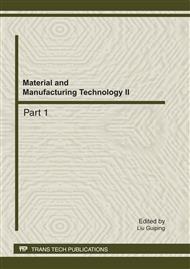p.68
p.73
p.77
p.80
p.85
p.89
p.94
p.98
p.103
Structure of TiOx Precipitated during Solidification of Steel
Abstract:
Various Ti oxides formation potential was analysised by thermodynamics during solidification of steel. It was found that Ti3O5 is the most stable one among all the types of Ti oxides. The effect of Mn element on the structure of Ti oxide was analysised by some experiments. The structure of Ti oxide without Mn is Ti3O5, and the inclusion, which contains some content of Mn, is Ti2O3 with rhombohedra structure. It is assumed that, [Ti] and [O] in liquid steel precipitated in form of Ti3O5. During the cooling process of solid steel, Ti3O5 reacted with [Mn], and exsited in form of Ti2O3 and MnO complex inclusion, which is advantageous for the nucleation of IGF.
Info:
Periodical:
Pages:
85-88
Citation:
Online since:
September 2011
Authors:
Keywords:
Price:
Сopyright:
© 2012 Trans Tech Publications Ltd. All Rights Reserved
Share:
Citation:


